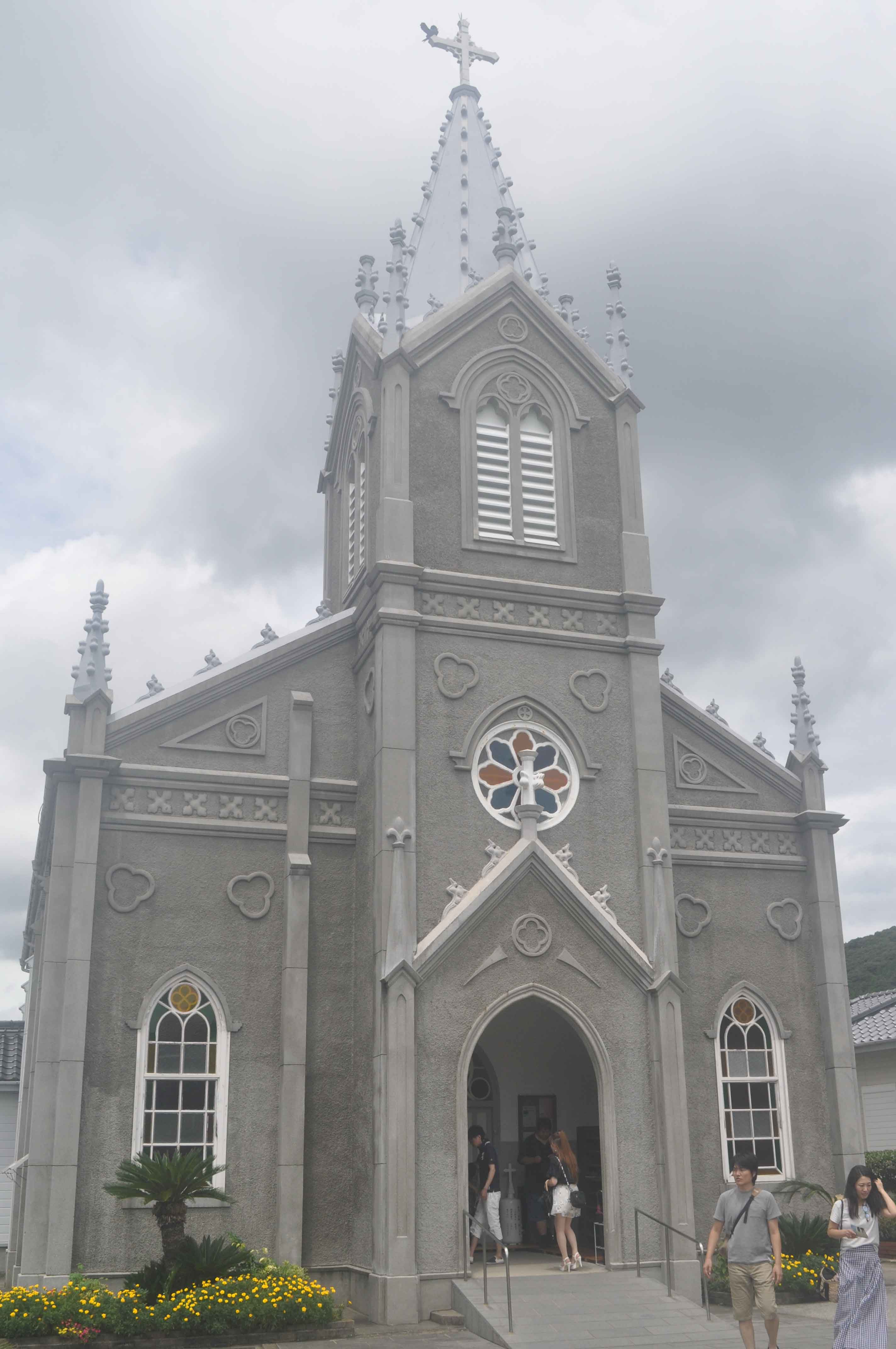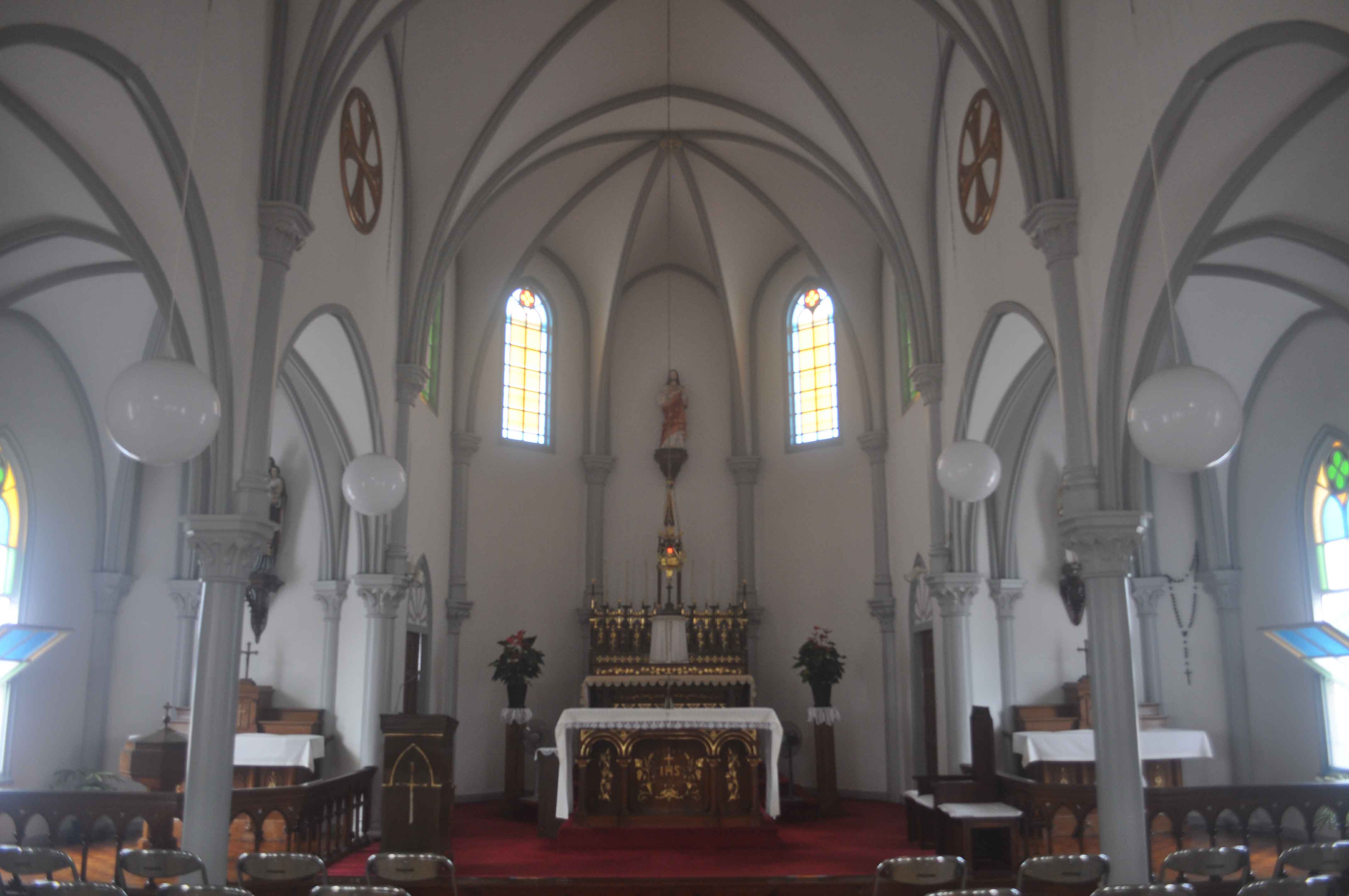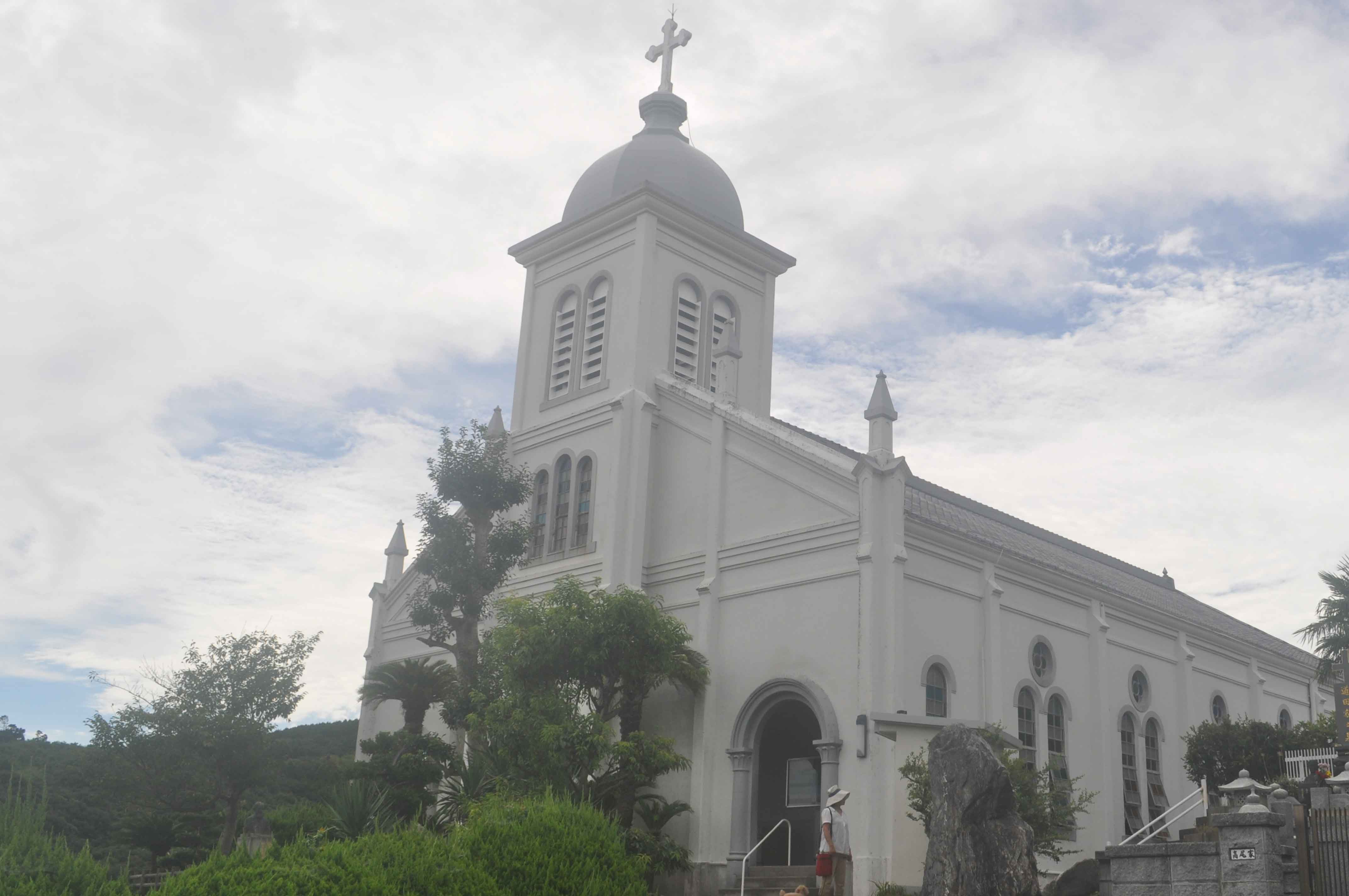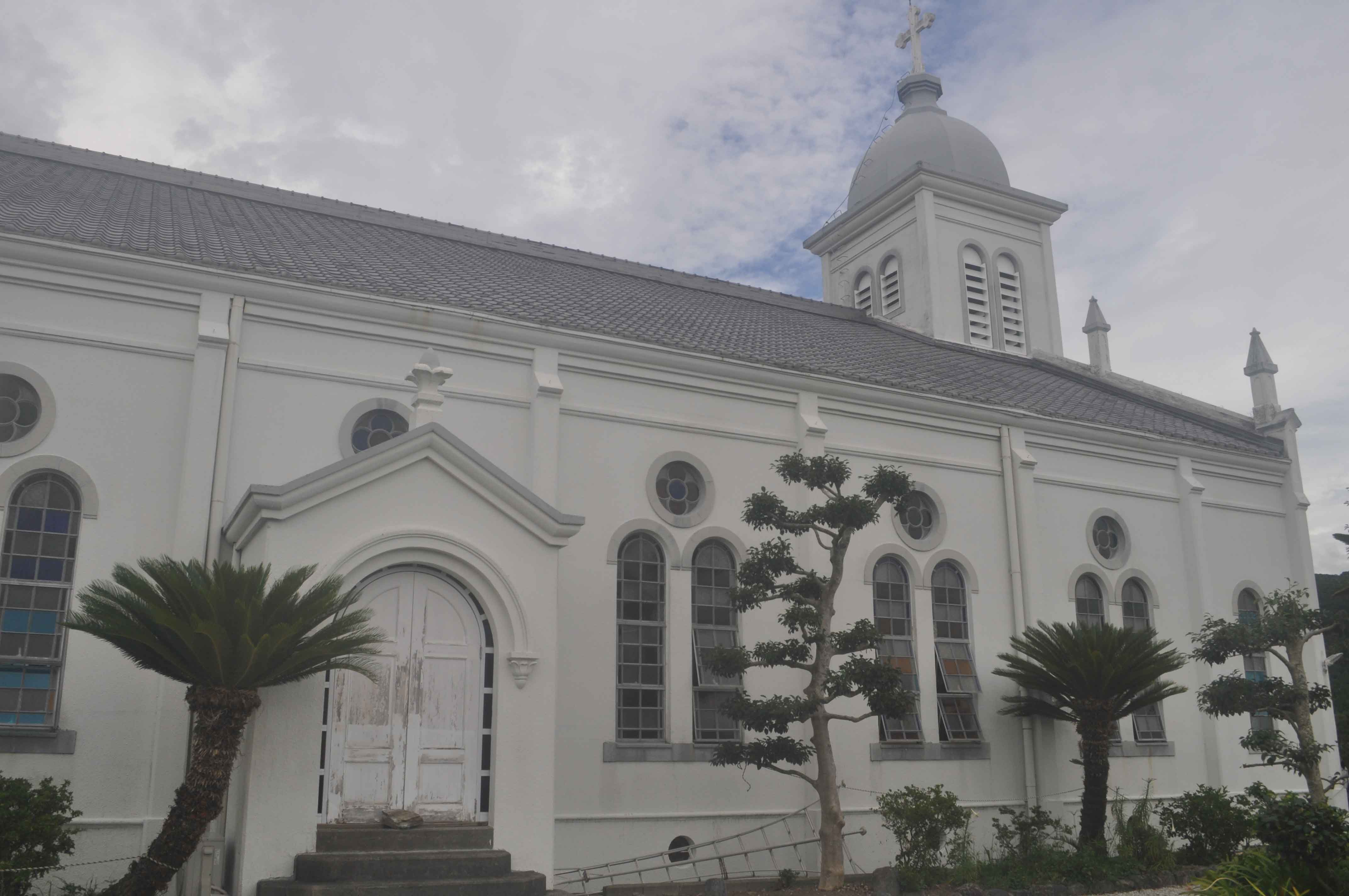


[World Heritage Site]It takes less than an hour from Ushibuka Port toSakitsu Church, after about an hour's drive from Izumi Station on the Kyushu Shinkansen, and a 30-minute ferry ride from Kuranomoto Port to Ushibuka Port in Amakusa. The Sakitsu settlement is known as a hidden Christian village facing Yokaku Bay, and in Amakusa, where the Christian culture flourished, there was hidden faith during the period of the ban of Christianity. Sakitsu Church was completed in 1885 as an old church. The current church was built by Father Harbu, who bought the site of Shoya Yashiki and designed and constructed by Yosuke Tetsukawa in 1934. The front altar is said to have been the place where a "treading picture" that was used as a test to determine a person's loyalty to Christianity was taken. This fishing village settlement centered on the "Marine Cathedral" represents the exchange and coexistence of the Japanese traditional religion and the Christianity formed as the faith continued.


